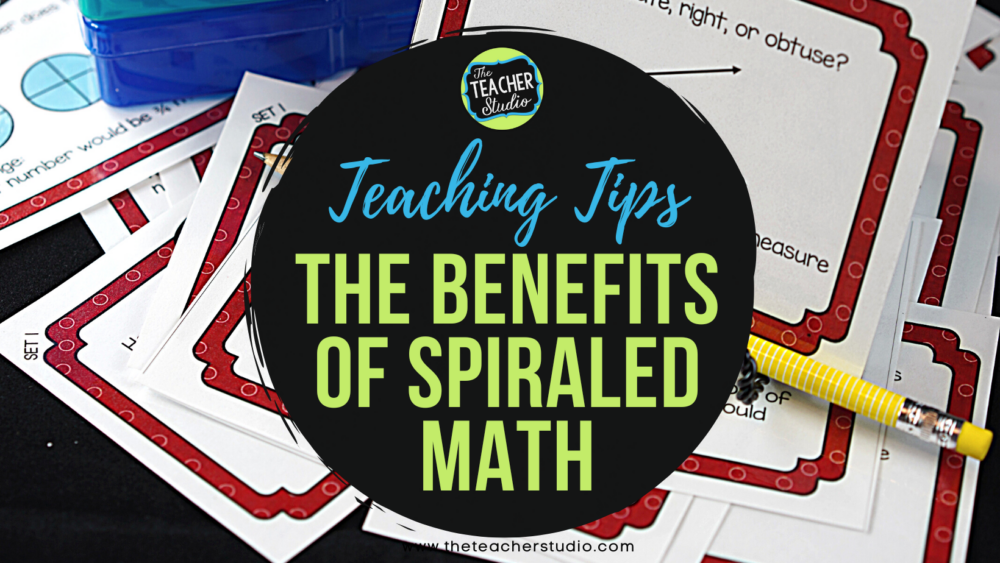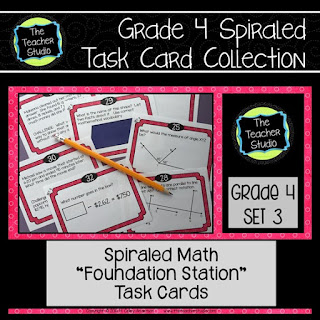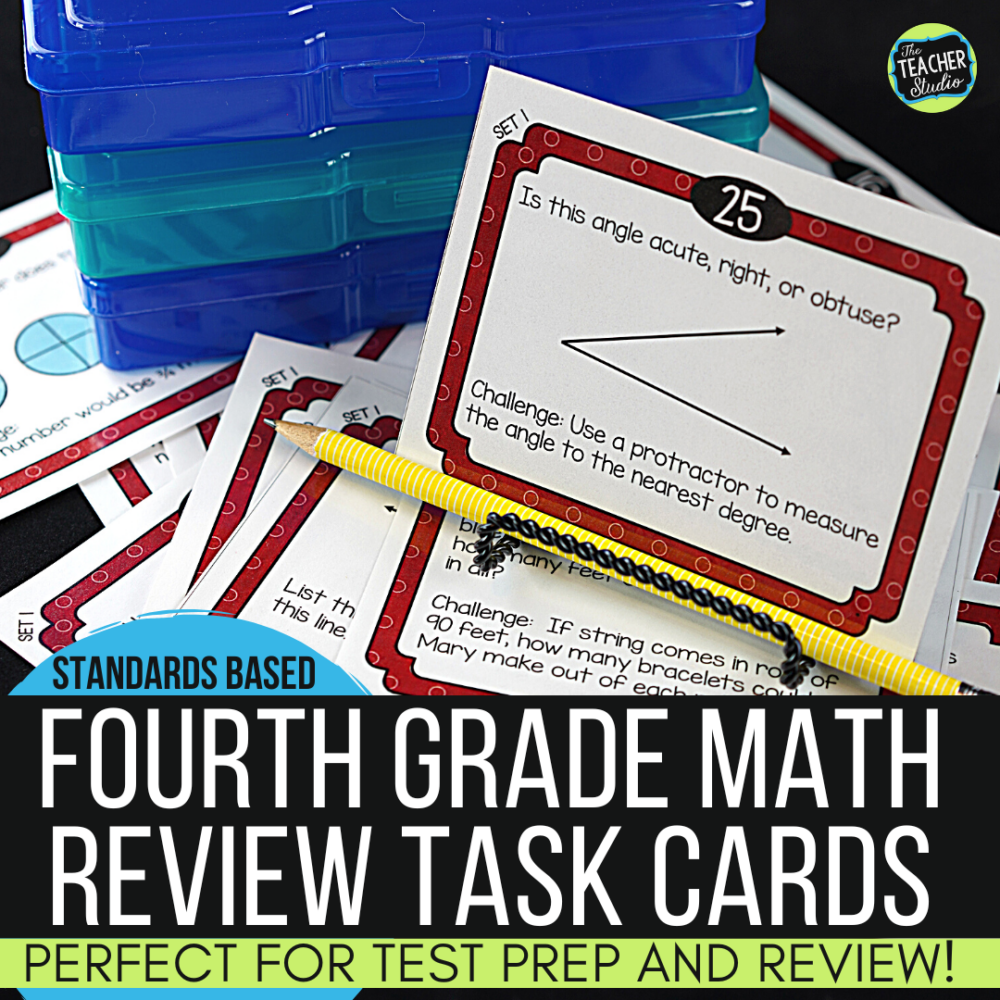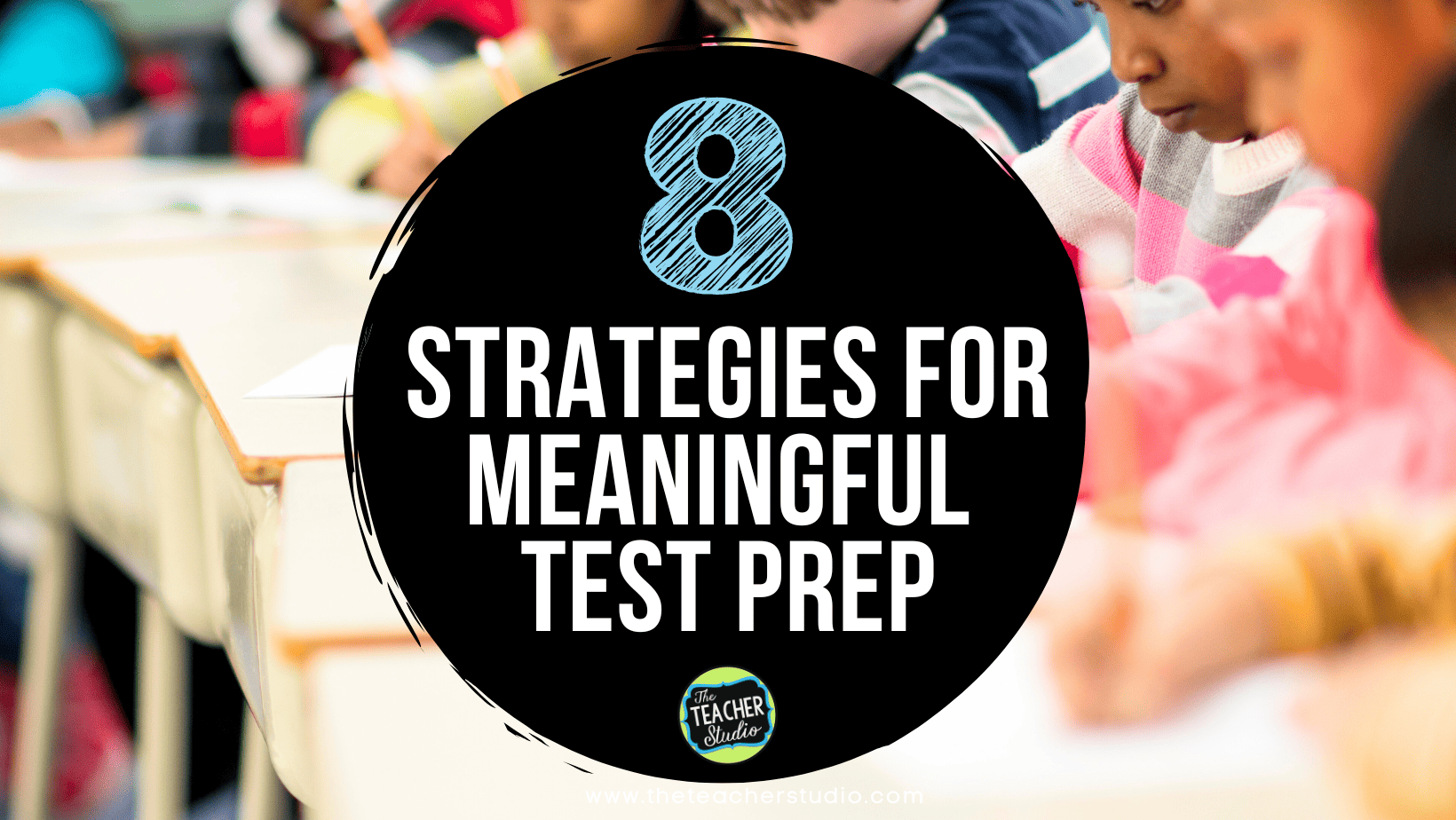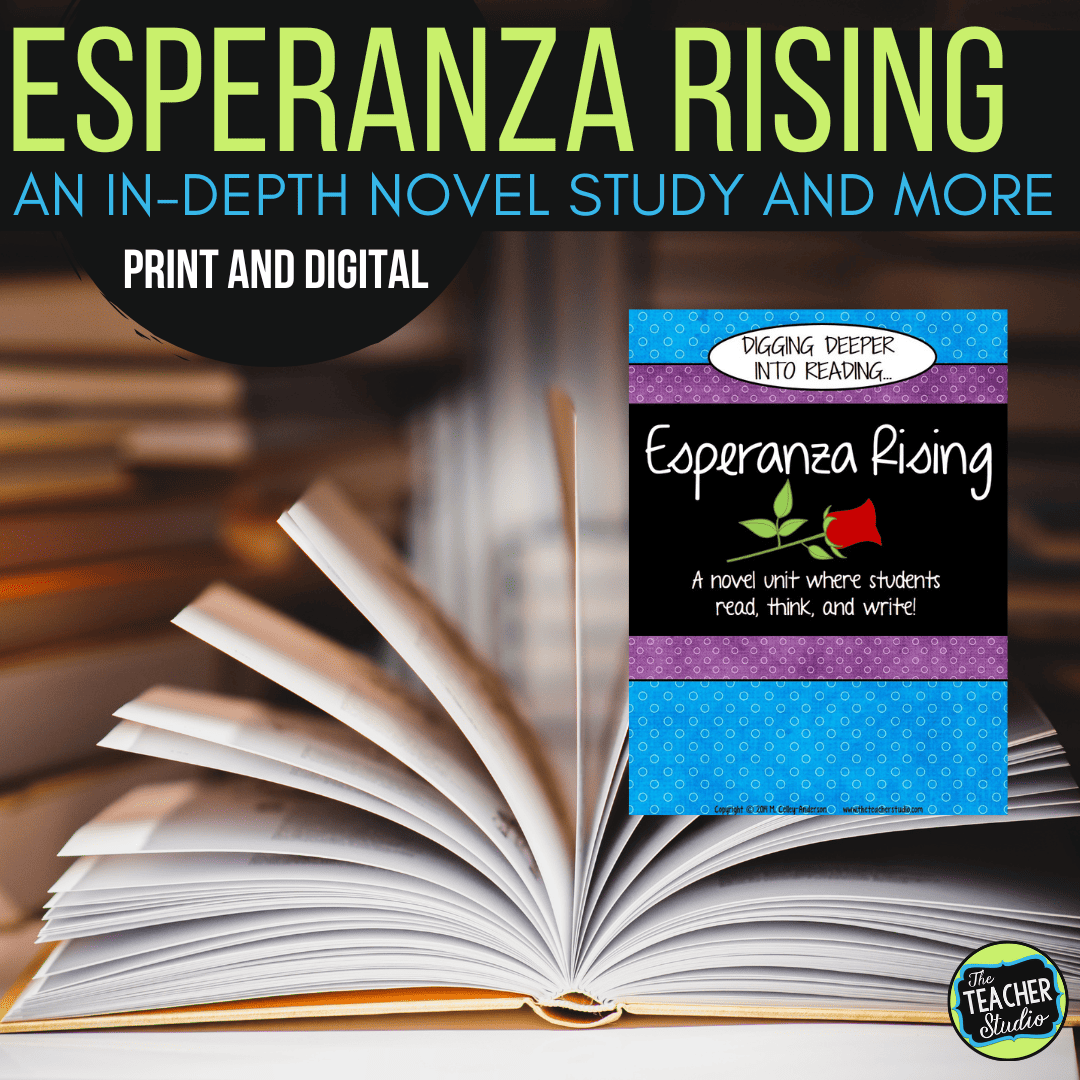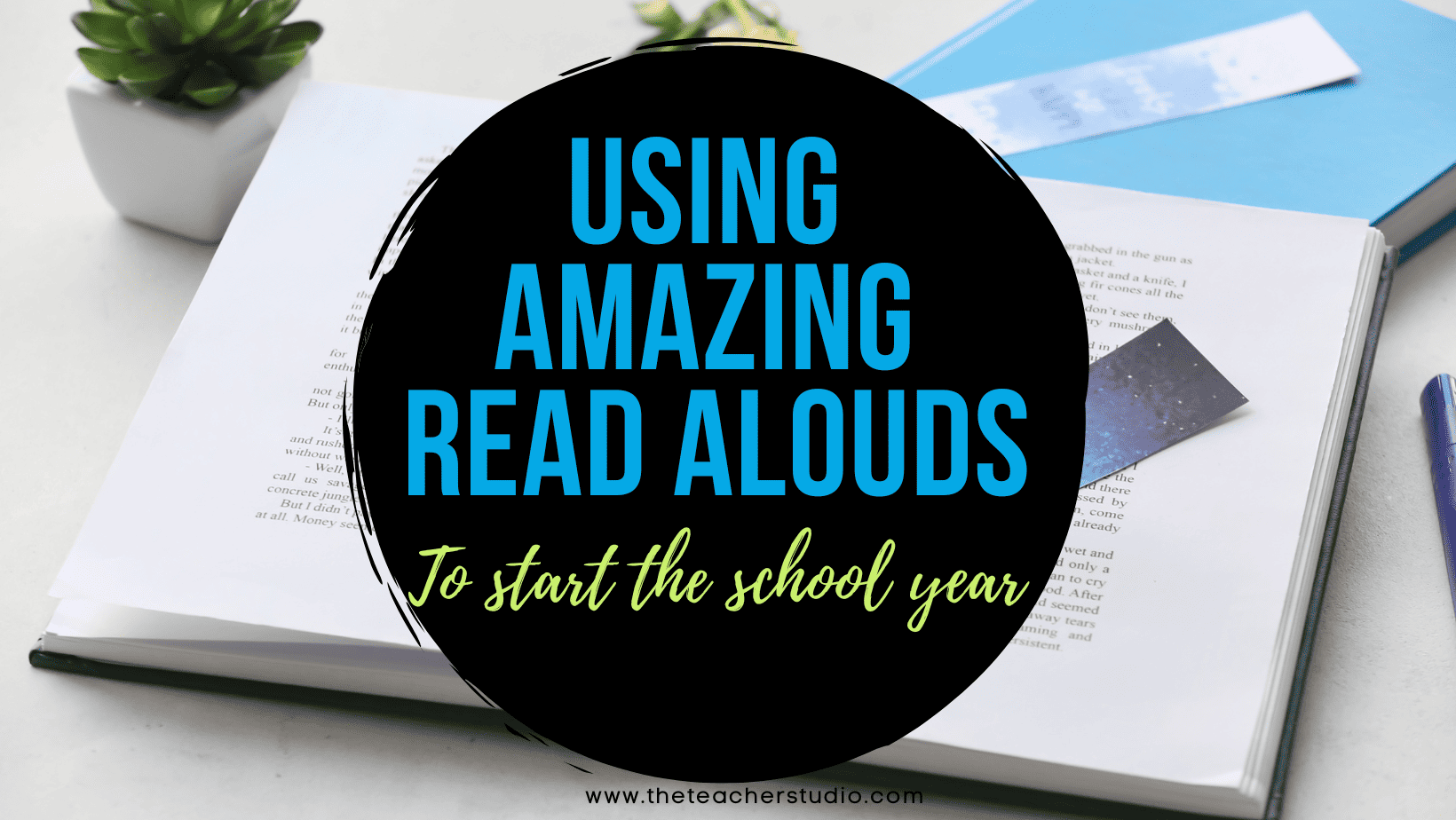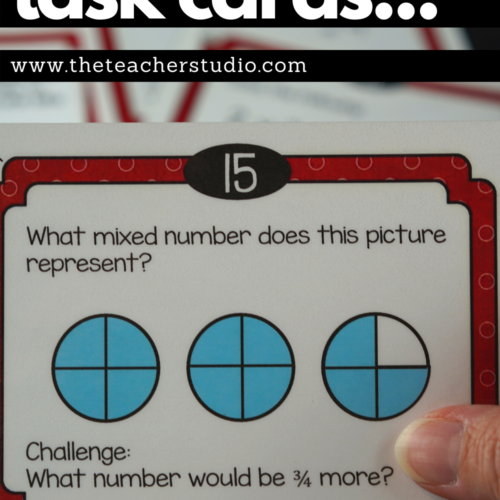
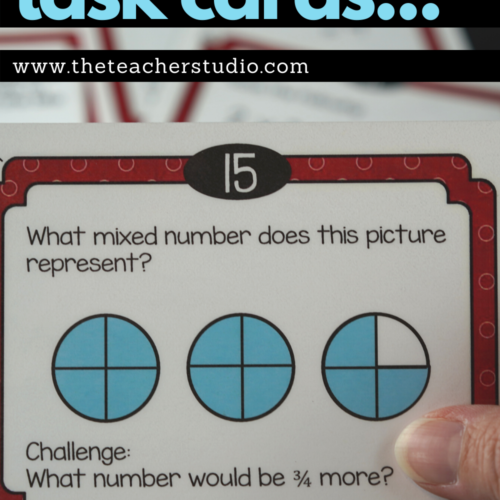
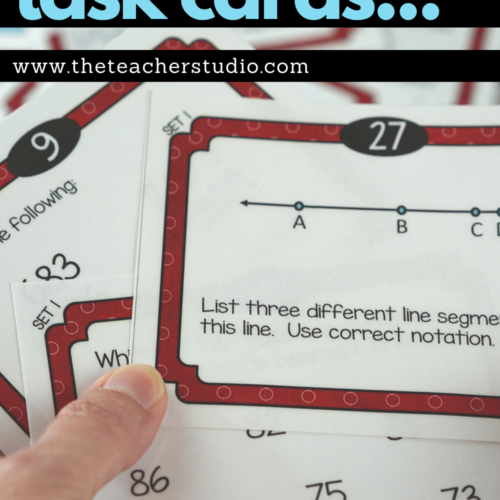
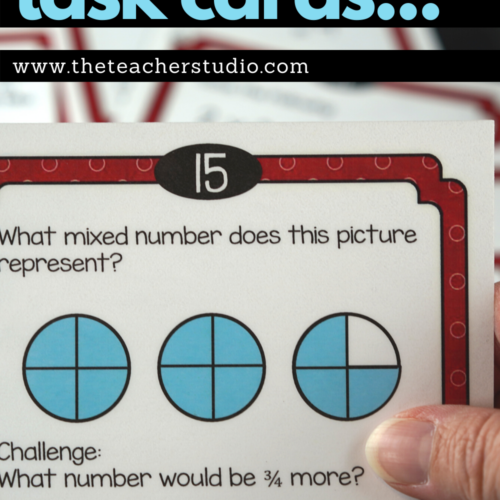
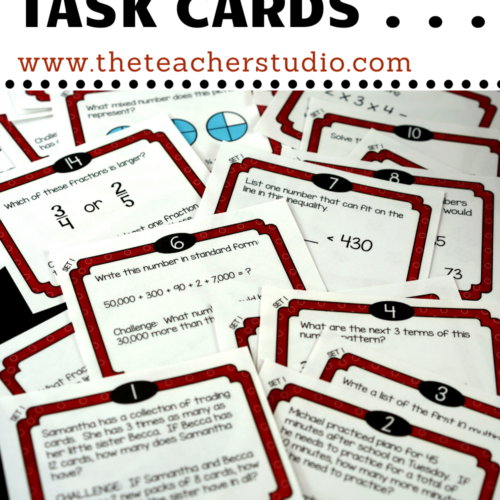
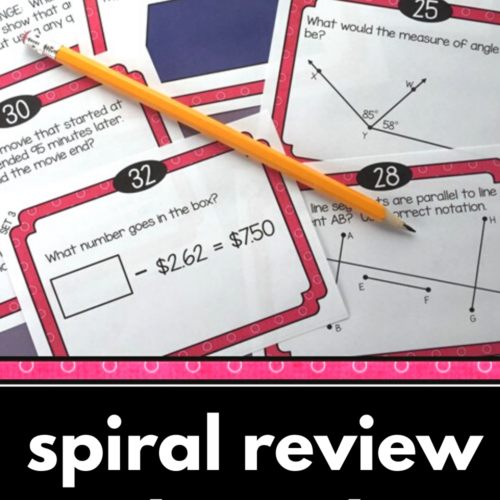
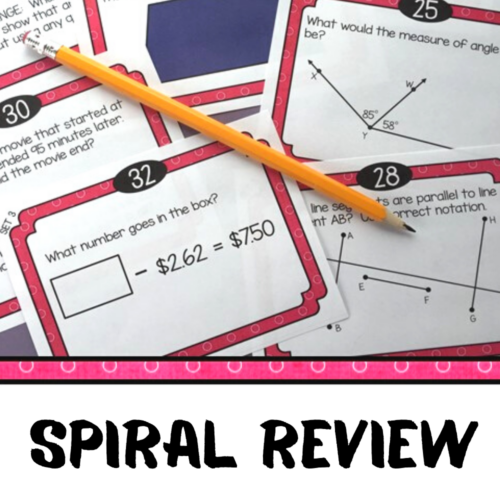
One thing that always bothered me with many math textbooks and curriculum maps was the idea that math instruction is best done in “blocks”–3 weeks of geometry. 2 weeks of addition. 4 weeks of fractions. You know as well as I do that students need far more repetitions of math concepts than this arrangement allows. That being said–I have no problem with intense units on different math concepts. Heck, my fraction unit is pretty involved and intense! Bring in spiral math review!
That being said, I make sure I deliberately plan to keep weaving other concepts into my instruction no matter how involved we are with our current units. The simple truth is, if we don’t continue to review and reinforce and reteach skills, our students simply don’t solidify those synapses to make that learning permanent. So…how can we work this into an already packed math class?
I have a few ideas for you!
1. Math warm ups
Whether you throw a problem under a document camera or print problems off for students to glue into their math notebooks, warming up with problems from previous units is a great way to keep them fresh. This can help students understand that topics aren’t learned and forgotten (think weekly spelling lists!). It can also really help us as teachers see who is continuing to struggle. In fact, I often will throw an “entrance slip” in as a warm up–and it’s rarely on the content we are currently studying (unless I am trying to judge how instruction is going) but is often revisiting a skill from a previous unit to see if it “stuck”–and who might need more review.
2. Practice activities during math workshop
If you teach in a “math workshop” or guided math format, students’ independent work time is a great way to spiral past instruction. Whether you have some review sheets that you didn’t get to, workbook pages you skipped for whatever reason, games or other activities related to past units, or other practice activities–providing students with opportunities to use those skills on a regular basis is so important. I often have students work in partners to do this kind of work to serve as a sort of “checks and balances”…they can refresh each other’s memory along the way. I love to use resources like THIS and THIS that are a little more open ended so all students have the chance to practice skills at a “just right” level.
3. Intervention groups
As I move from topic to topic, I keep a list of students who need continued work. I don’t know about you, but I feel there is a constant battle in my mind of “Should I move on because MOST students get it?” or “Do I need to spend another few days on this concept?” Know what I mean? The best solution I have found is to be constantly on top of which students are the “getters” and which are the “needers”–and I move on with the class and focus the “needers” in small group work. After all, if they aren’t getting it with whole class instruction, another few days of it probably won’t help either–they need more targeted help. I use formative assessment resources for this constantly so I always know where my students stand. Here is an example of how I keep track of this…
 |
| This is from my Area/Perimeter Formative Assessment Toolbox… |
4. Spiral Review Games!
If you have followed me at all you know that I am a firm believer in using games as a way to review skills. I have games in circulation at all times that help reinforce a variety of skills…and I work very hard to help students recognize the value of playing games and how to choose the best games to build fluency and accuracy. Check out THIS POST for more details!
What was I thinking?
Here they are–Spiral Review Cards!
Spiral Review: See what you think!
Or the bundled set!


